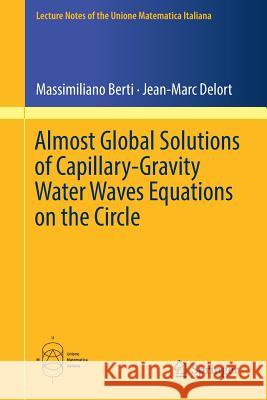Almost Global Solutions of Capillary-Gravity Water Waves Equations on the Circle » książka
topmenu
Almost Global Solutions of Capillary-Gravity Water Waves Equations on the Circle
ISBN-13: 9783319994857 / Angielski / Miękka / 2018 / 269 str.
Kategorie:
Kategorie BISAC:
Wydawca:
Springer
Seria wydawnicza:
Język:
Angielski
ISBN-13:
9783319994857
Rok wydania:
2018
Wydanie:
2018
Ilość stron:
269
Waga:
0.39 kg
Wymiary:
23.39 x 15.6 x 1.5
Oprawa:
Miękka
Wolumenów:
01
Dodatkowe informacje:
Wydanie ilustrowane











